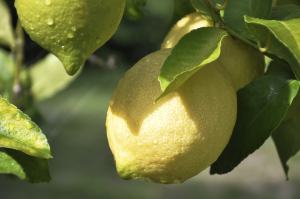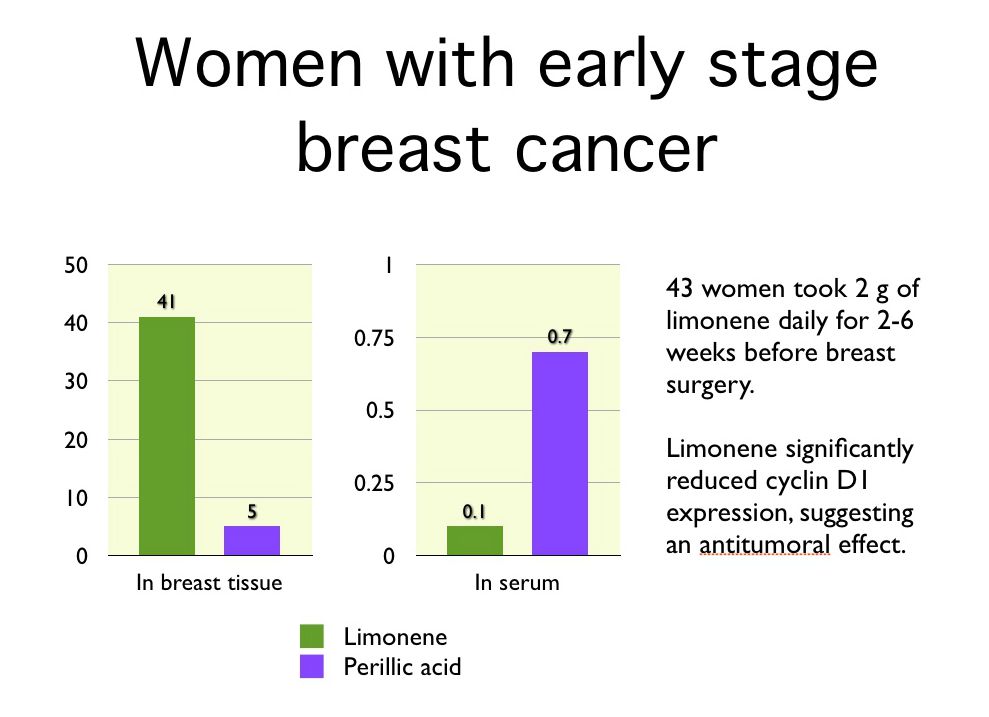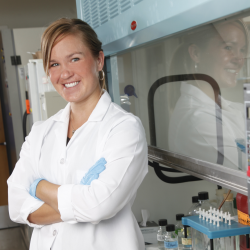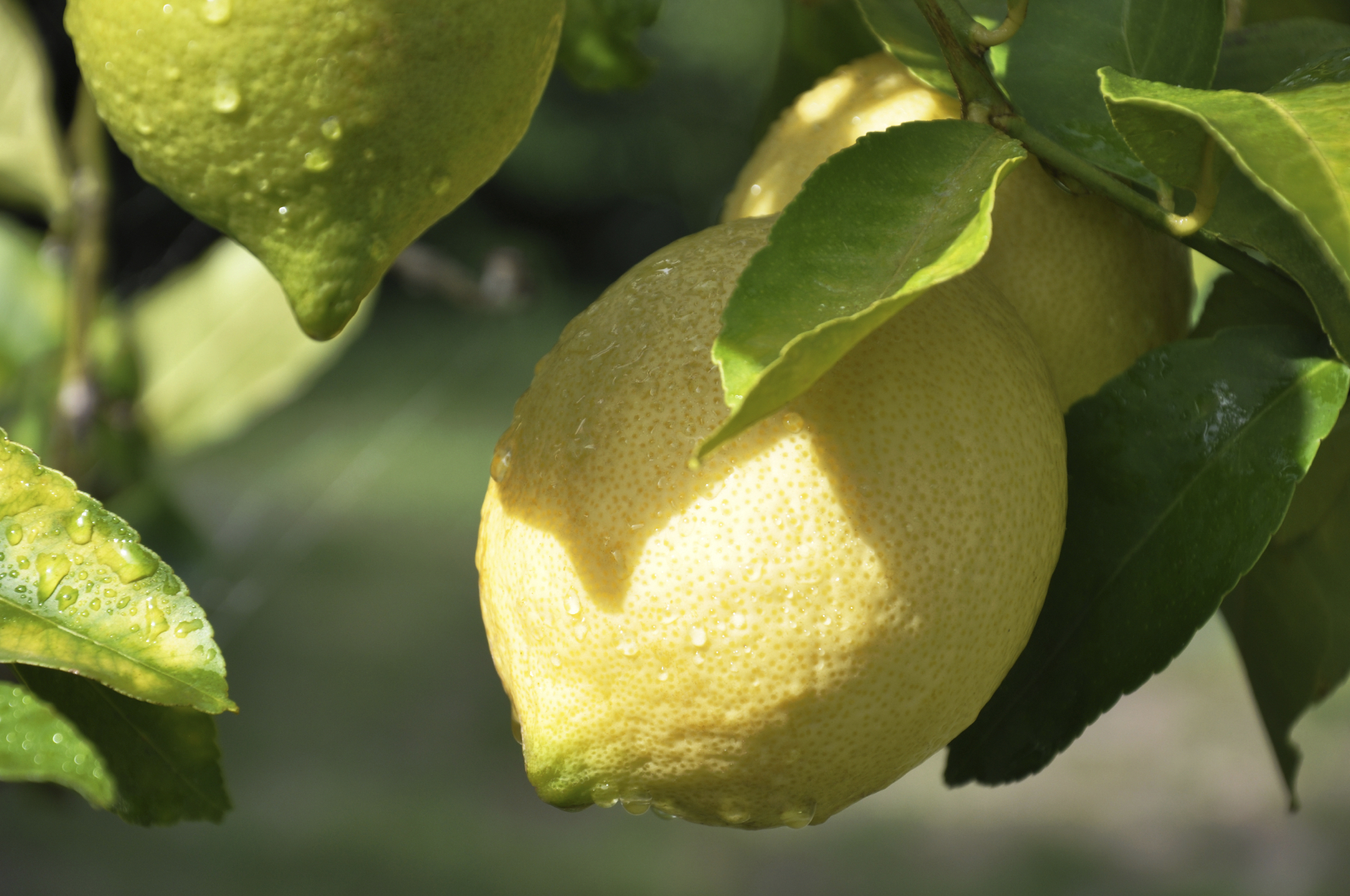In the United States, breast cancer is the most common cancer in women, and it is the second most common cause of death from any cancer. According to the National Cancer Institute 12.3% of women will be diagnosed with breast cancer at some point during their lifetime, based on 2010-2012 data. In 2012, there were an estimated 2.9 million women living with breast cancer in the United States. Risk factors, and common ways to avoid them, are elaborated here. Types of breast cancer are listed here.
There has been much research on citrus fruits, citrus oils, and limonene in relation to breast cancer, and recent developments seem to suggest at least a preventive effect. Treatment of any cancer is a significant challenge, and I want to be clear that I am not advocating an alternative breast cancer treatment regime. This is about prevention. That doesn’t mean this regime will be useless in combination with other therapies. It may have some effect, but is not likely to be effective as a stand-alone treatment.

Citrus x limon
Limonene
Limonene is the major constituent of citrus fruit oils, and is found in orange, tangerine and grapefruit oils at about 90%, and in lemon and mandarin oils at about 70%. Research in the 80s showed that limonene (or in one case orange oil) could either inhibit the development of breast cancer in female rodents, or could cause regression of existing tumors (6,7,8,9,12,19). In the mid 1990s, 11 patients with advanced breast cancer were included in one clinical trial using high oral doses of limonene. There was regression of disease in only one patient (22). Perillyl alcohol, a metabolite of limonene, was similarly trialed in a small group of patients with advanced breast cancer, also without success (2). However, while the use of oral limonene as a cancer treatment option has stalled, it is now showing great promise in breast cancer prevention and for this purpose, topical application appears to be as effective as oral dosing.
Prevention
Prevention is difficult to prove, but a scientific team around Jessica Miller at the University of Arizona has been focusing their energies on limonene and breast health for the past 7 years. So far they have published five papers. First, the team established a method to measure limonene in body fat (13), and then they reported that limonene is preferentially absorbed into buttock fat (14). This was found in 7 healthy adults (one male, 6 females) who drank lemonade made from whole lemons every day for four weeks. After the first 6 hours, there was 8 times more limonene in body fat than in the blood; after four weeks, the difference increased to 34 times, showing that limonene accumulates in fatty tissue. So at this point we know that limonene is drawn to fat cells in the body. In fact, as far as we know, it stays there for longer than most other essential oil constituents.

Data from Miller et al 2013
The team then found that either oral or topical administration of orange oil to female mice resulted in preferential absorption of limonene into breast tissue, with similar amounts being present from oral as from topical (15). In the same study, healthy women were recruited to apply orange oil, diluted to 10% or 20% in fractionated coconut oil, to their breasts. This was determined to be both safe and feasible.
Following this, 43 women with newly diagnosed, operable breast cancer were recruited to ingest two grams of limonene daily for 2-6 weeks (the time varied with scheduled surgery). In this clinical trial, limonene again preferentially concentrated in breast tissue (see illustration). In addition, there was a 22% reduction in cyclin D expression. This is interesting, since cyclin D is an important factor in rates of cell growth, and is overexpressed in hyperplasia and intraductal carcinoma of the breast, suggesting this plays a role in the earliest stages of breast cancer development (16).
Cancer prevention with natural compounds is not just about direct action against any cancer cells that may arise, and also involves effects such as immune-enhancing, antimutagenic and antioxidant (21). Interestingly, these indirect cancer protective effects have all been established for limonene (1,5,10,18). In their latest research paper, Jessica Miller and colleagues studied the effect of limonene on hundreds of substances in the body, such as adrenal hormones, amino acids and glucose metabolites. These were blood tests that were conducted during the previously described clinical trial (17). An important conclusion was that limonene counteracts many of the metabolic changes that happen in people with breast cancer, strongly suggesting a preventive effect.

Dr. Jessica Miller
Citrus fruit consumption
The above studies on limonene suggest breast cancer preventive effects, and it is worth noting that there is also epidemiological evidence from the consumption of citrus fruit. Several such reports looked at the relationship between citrus fruit consumption and breast cancer incidence. A meta-analysis of five studies found an overall 10% reduction in breast cancer incidence, associated with “high intake” of citrus fruits. A Japanese report not included in this review concluded that daily citrus consumption was correlated with an 11% reduced incidence of all cancers in both sexes. The effect was even greater (17%) in those who also drank green tea every day (11). An association with citrus fruits does not necessarily mean that the essential oil, or limonene, is solely responsible, in fact this is unlikely as citrus fruits contain many anticancer substances, not all found in the essential oil.
Conclusions
There is growing evidence that citrus fruit, and limonene-rich citrus essential oils could play a role in the prevention of breast cancer. It is not implausible that combination of fresh oranges, green tea and a topical essential oil formulation could be preventive for many people. However, we need to know more about the safety and efficacy of long-term topical use.
References
- Bacanlı, M., Başaran, A. A., & Başaran, N. (2015). The antioxidant and antigenotoxic properties of citrus phenolics limonene and naringin. Food and Chemical Toxicology, 81, 160–170
http://www.ncbi.nlm.nih.gov/pubmed/25896273 - Bailey, H. H., Attia, S., Love, R. R. et al (2008). Phase II trial of daily oral perillyl alcohol (NSC 641066) in treatment-refractory metastatic breast cancer. Cancer Chemotherapy and Pharmacology, 62(1), 149–157
http://www.ncbi.nlm.nih.gov/pubmed/17885756 - Chaouki, W., Leger, D. Y., Liagre, B. et al (2009). Citral inhibits cell proliferation and induces apoptosis and cell cycle arrest in MCF-7 cells. Fundamental & Clinical Pharmacology, 23(5), 549–556
http://www.ncbi.nlm.nih.gov/pubmed/19656204 - De Amicis, F., Aquila, S., Morelli, C. et al (2015). Bergapten drives autophagy through the up-regulation of PTEN expression in breast cancer cells. Molecular Cancer, 14(1), 130
http://www.molecular-cancer.com/content/pdf/s12943-015-0403-4.pdf - Del Toro-Arreola, S., Flores-Torales, E., Torres-Lozano, C. et al (2005). Effect of d-limonene on immune response in BALB/c mice with lymphoma. International Immunopharmacology, 5(5), 829–838
http://www.ncbi.nlm.nih.gov/pubmed/15778119 - Elegbede, J. A., Elson, C. E., Qureshi, A. et al (1984). Inhibition of DMBA-induced mammary cancer by the monoterpene d-limonene. Carcinogenesis, 5(5), 661–664
http://www.ncbi.nlm.nih.gov/pubmed/6426810 - Elegbede, J. A., Elson, C. E., Tanner, M. A. et al (1986). Regression of rat primary mammary tumors following dietary d-limonene. Journal of the National Cancer Institute, 76(2), 323–325
http://www.ncbi.nlm.nih.gov/pubmed/3080636 - Elson, C. E., Maltzman, T. H., Boston, et al (1988). Anti-carcinogenic activity of d-limonene during the initiation and promotion/progression stages of DMBA-induced rat mammary carcinogenesis. Carcinogenesis, 9(2), 331–332
http://www.ncbi.nlm.nih.gov/pubmed/3123086 - Haag, J., Lindstrom, M., & Gould, M. (1992). Limonene-induced regression of mammary carcinomas. Cancer Research, 4021–4026
http://cancerres.aacrjournals.org/content/52/14/4021.long - Hamada, M., Uezu, K., Matsushita, J. et al (2002). Distribution and immune responses resulting from oral administration of d-limonene in rats. Journal of Nutritional Science and Vitaminology, 48(2), 155–160
http://www.ncbi.nlm.nih.gov/pubmed/12171437 - Li, W. Q., Kuriyama, S., Li, Q. et al (2010). Citrus consumption and cancer incidence: The Ohsaki cohort study. International Journal of Cancer, 127(8), 1913–1922
http://onlinelibrary.wiley.com/doi/10.1002/ijc.25203/epdf - Maltzman, T. H., Hurt, L. M., Elson, C. E. et al (1989). The prevention of nitrosomethylurea-induced mammary tumors by d-limonene and orange oil. Carcinogenesis, 10(4), 781–783
http://www.ncbi.nlm.nih.gov/pubmed/2702727 - Miller, J. A., Hakim, I. A,, Thomson, C. et al (2008). Determination of d-limonene in adipose tissue by gas chromatography-mass spectrometry. Journal of Chromatography. B, Analytical Technologies in the Biomedical and Life Sciences, 870(1), 68–73
http://www.ncbi.nlm.nih.gov/pmc/articles/PMC2505176/ - Miller, J. A., Hakim, I. A., Chew W. et al (2010). Adipose tissue accumulation of d-limonene with the consumption of a lemonade preparation rich in d-limonene content. Nutrition & Cancer, 62(6), 783–788
http://www.ncbi.nlm.nih.gov/pubmed/20661827 - Miller, J. A., Thompson, P., Hakim, I. A. et al (2012). Safety and feasibility of topical application of limonene as a massage oil to the breast. Journal of Cancer Therapy, 3, 1–12
http://www.ncbi.nlm.nih.gov/pmc/articles/PMC3824622/ - Miller, J. A., Lang, J., Ley, M. et al (2013). Human breast tissue disposition and bioactivity of limonene in women with early stage breast cancer. Cancer Prevention Research 6(6), 577–584
http://www.ncbi.nlm.nih.gov/pmc/articles/PMC3692564/ - Miller, J. A., Pappan, K., Thompson, P. A. et al (2015). Plasma metabolomic profiles of breast cancer patients after short-term limonene intervention. Cancer Prevention Research, 8(1), 86–93
http://www.ncbi.nlm.nih.gov/pubmed/25388013 - Raphael, T. J., & Kuttan, G. (2003). Immunomodulatory activity of naturally occurring monoterpenes carvone, limonene, and perillic acid. Immunopharmacology and Immunotoxicology, 25(2), 285–294
http://www.ncbi.nlm.nih.gov/pubmed/12784919 - Russin, W. A., Hoesly, J. D., Elson, C. E. et al (1989). Inhibition of rat mammary carcinogenesis by monoterpenoids. Carcinogenesis, 10(11), 2161–2164
http://www.ncbi.nlm.nih.gov/pubmed/2509095 - Song, J. K., & Bae, J. M. (2013). Citrus fruit intake and breast cancer risk: A quantitative systematic review. Journal of Breast Cancer, 16(1), 72–76
http://www.ncbi.nlm.nih.gov/pmc/articles/PMC3625773/pdf/jbc-16-72.pdf - Tsuda, H., Ohshima, Y., Nomoto, H. et al (2004). Cancer prevention by natural compounds. Drug Metabolism and Pharmacokinetics, 19(4), 245–263
https://www.jstage.jst.go.jp/article/dmpk/19/4/19_4_245/_pdf - Vigushin, D. M., Poon, G. K., Boddy, A. et al (1998). Phase I and pharmacokinetic study of d-limonene in patients with advanced cancer. Cancer Research Campaign Phase I/II Clinical Trials Committee. Cancer Chemotherapy and Pharmacology, 42(2), 111–117
http://www.ncbi.nlm.nih.gov/pubmed/9654110


very timely as my sister was recently diagnosed. I would like to know more about amounts and how to take and or apply this.
My thought is, could increasing the Limonene level in the fat cells help a breast cancer patient trying to lose weight, protect the cells when the storage estrogen is released from the fat cells?
I have gotten no response from oncologists. If excess estrogen is stored in fat cells, shedding fat cells can release more estrogen, which is not good in estrogen positive cancer.
So if the cells held high levels of Limonene, they could possibly be protected?
Did you ever get a response. I had the same puzzled looked by my oncs! I think they get broken down differently as a different form. My thoughts. Quite the scientist, eh?
This makes me wonder if the traditional ayurvedic practice of drinking warm lemon water every morning could have its own set of benefits, too. A fresh lemon is sliced and warm kettle water is poured, allowing the natural properties of the lemon to be released … Very interesting, indeed!
I have ductal cell carcinoma- which had spread to my lymph nodes. This was hormone responsive cancer. I would like to do as much as possible to stop a reccurance of this – alongside taking tamoxifen. I have had a lumpectomy- chemotherapy- herceptin and radio therapy. This sounded very interesting- but the chemo fog can take years to go – can you please just tell me in laymans terms what I could be doing using the citrus oils to help stop a reccurance?
Thank you
Sue
Hello Sue,
You can try this oil for prevention: http://tinyurl.com/j4c332x
Robert
Thanks for this article.
As I read the article I understood that consuming citrus helps to prevent breast cancer. Someone recommended to ingest 1 drop of lemon essential oil in a glass with water daily, for prevention. But is it safe to do that daily? Also in water that is not the best vehicle for essential oils? can you please explain to me about the contraindications of this practice that is very extended in some people?
thanks in advance
The article is really about using essential oils topically for breast cancer prevention. Ingesting 1 drop of Lemon oil in water would not have the same effect, and as you say, is neither a safe nor effective way to use essential oils. In the long-term, what also helps for cancer prevention generally is eating citrus fruit daily. There are some useful compounds in citrus fruit and fruit juice that are not found in the equivalent essential oil.